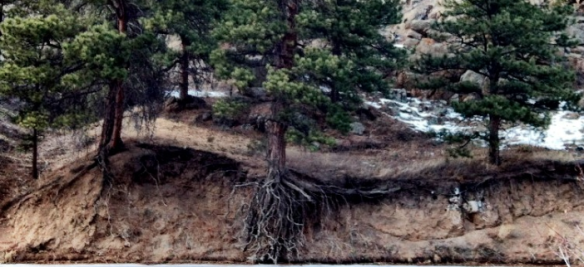
Forest soil under lodegpole pine in Lyons, Colorado. Photo courtesy of Andrea Borkenhagen, 2013.
By Kelly S. Ramirez, PhD
As a soil ecologist, I am inevitably asked about dirt (and lawn care), but mainly dirt. Depending on the person and my mood and the event, I may quip back, ‘dirt is under your fingernails.’* Some inquirer’s eyes will glaze over, realizing I was the wrong person to make small talk with at said event. Others will eye me apologetically.
Soil, not dirt, is the foundation of our terrestrial ecosystems, maintains our food sources, cleans and cycles our water, regulates climate change, controls disease, and supports our cultural activities and recreation (Wall and Nielsen, 2012). Continue reading




You must be logged in to post a comment.